It's Small Business Saturday Folks! Did You Know That NASA Collaborates With SmallBiz On Extraterrestrial




It's Small Business Saturday folks! Did you know that NASA collaborates with SmallBiz on extraterrestrial projects? This summer I worked on a NASA small business project, innovating ways to create energy on Mars! I have also sat in on two SmallBiz design proposals and was blown away by the ideas for deep space travel, energy creation and resource utilization. Despite my Black Friday all-nighter I have kicked off today having breakfast at a local joint. Take time today to support SmallBiz and learn about SmallBiz projects with NASA... SmallBiz Mars Humidity Sensor Project: http://kirsikuutti.blogspot.com/2016/08/sensing-mars-nasa-co-op-2-week-nine.html NASA SmallBiz success story: http://www.spacenewsmag.com/feature/bridging-the-valley-of-death/ SmallBiz on Space Station: http://www.spacenewsmag.com/feature/starting-small-to-develop-big-ideas/ SmallBiz deals in Duluth,MN: http://downtownduluth.com/df-data/files/SBS-2016.pdf Find NASA SmallBiz Partners:https://ehb8.gsfc.nasa.gov/sbir/public/technologySearch/searchAction.do?requestFrom=NASASBIRHome
More Posts from Ourtech and Others



NASA Co-Op Week 11: Leaky Space Station
Space Walk My latest opportunity to sit console was during a spacewalk (extravehicular activity/ EVA) by Scott Kelly and Kjell Lindgren. They were on a mission to upkeep the International Space Station's ailing structures. One of the primary tasks was to fix an ammonia leak originally identified in 2012. Media dressed this leak up with red flags and flashing lights, however, NASA predicted this fault to occur given the age of ISS and the nature of its climate control system. Since the ISS is a closed loop system the interior produces a lot of heat from astronauts and their hardware, water is used to cool the space station, the energy is then transferred to ammonia, and lastly into giant radiators. This 6.5 hour long EVA consisted of mating power cables, tubes valves, and checking integrity of systems. During the EVA I took flight notes on the procedures Scott and Kjell were running. I was to report what step each of them were on to the PLUTO flight controller to my right.
Grace Hopper Action Items Something that was scary but rewarding was presenting to my branch at NASA about what I learned at GHC and even challenged them with three action items... 1)Make the work place welcoming (paid parent leave, mentoring and celebrating results over hours), 2) Educating the community about how cool STEM is. 3) Communicating Effectively. I encourage you all to present action items to your current employers, student group, or college professionals after attending conferences.
Astronaut Training Development I thought I had made a pretty good astronaut training video... until I put it in front of user testers. I learned I didn't even effectively communicate how to turn the device on right! Back to the drawing board for me. I had 17 users of various ages, disciplines, personalities and technology experience test the training to insure I was catering to everyone. After reviewing helpful feedback I edited the training video again so the messages were clearer.
WAYS TO GET INVOLVED NASA summer internship applications now open: https://intern.nasa.gov/ossi/web/public/main/ Learn to code: https://techprep.fb.com/get-started/ Accomplishments this week at NASA: https://youtu.be/NPLPmdFx2yw Houston Maker Faire Nov14 (3D Printing, Robots): http://www.houstonmakerfaire.com/ Astronaut Kjell plays the bagpipes: https://youtu.be/7DWzmq9e0Lw

SPACE WALK 7:10am CT tomorrow October 28 on NASA TV UStream: https://t.co/VMWu4QWWf7 Astronaut Kjell & Scott Kelly will be floating outside the International Space Station (ISS) doing stuff. Probably fixing things because poor ISS is almost 15 years old. If you think about how old a dog is when it's 15 that's basically like ISS. Photo by NASA
Spectacular!

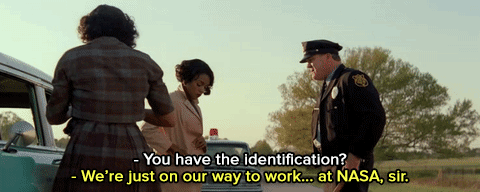

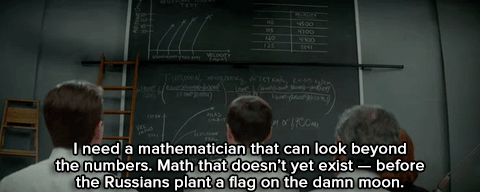
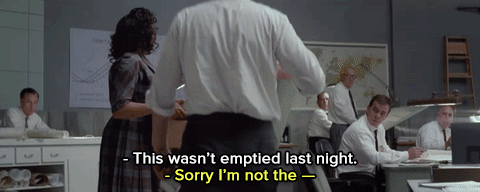
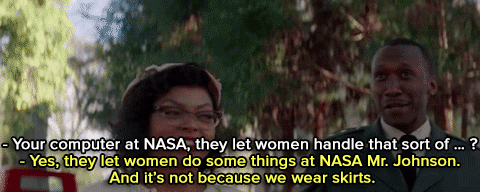

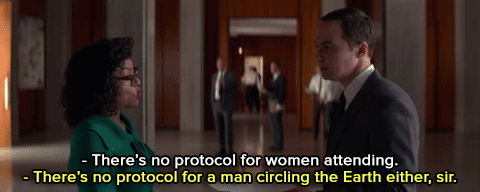
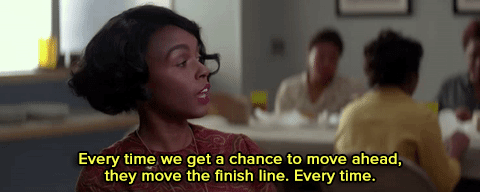
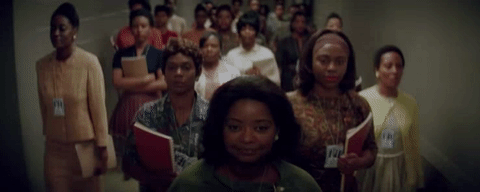
Watch: The trailer for ‘Hidden Figures’ is here — and it looks incredible.
follow @the-movemnt

Falcon 9 Sticks the Landing
Game changing launch of Iridium Next mission, Land of Falcon 9 first stage landing and deployment of 10 satellites in low earth orbit by SpaceX. These satellites will provide important data to first responders on Earth. The first stage landing was captured entirely by the Falcon 9's point of view. First launch following SpaceX's 2016 explosion. SpaceX worked with NASA, Airforce and other groups to identify the cause and find a solution. The 2016 was caused by carbon dioxide build up between stage 2's layer of aluminum and carbon fiber wrap.

Stage one successfully lands on barge named “Just Read the Instructions”.

Stage carrying the Iridium Next satellites glows red.

Liftoff with critical small one minute launch window.

Falcon 9′s fins adjust for landing on sea barge.




A dozen NASA Interns from Johnson Space Center are road tripping to Kennedy Space Center to tour and watch the launch tomorrow October 30th. The United Launch Alliance (ULA) are launching a GPS into semi-synchronous circular orbit about 11,000 nautical miles over Earth's surface. This GPS will help military personnel and civilians navigate providing data. WATCH THE LAUNCH here October 30th 12:17pm EDT: http://www.ulalaunch.com/nasa.aspx Mission Overview: http://www.ulalaunch.com/uploads/docs/Mission_Booklets/AV/av_gpsiif11_mob.pdf More About Atlas V: http://www.ulalaunch.com/atlas-v-to-launch-gps-iif11.aspx Rocket photo by ULA





Scott Kelly, the astronaut on a one year mission, in his extra vehicular activity (EVA) suit and the International Space Station (ISS). NASA is holding a pumpkin carving contest for its employees. The crew aboard ISS will judges them as they are missing Halloween.

Watch live! Astronaut Kate Rubins and Jeff Williams spacewalk around the International Space Station! They are retracting a thermal radiator which is part of the space station cooling system. Thought this picture was neat because you could see one of their reflections in a device. http://www.ustream.tv/nasahdtv
What are the most important skills an astronaut should have m?
First of all, the basic requirement is a bachelor’s degree in a STEM field, and 3 years of experience (which can also be substituted for by an advanced degree). Other than that, operational experience (things with a technical/active/hands on nature like flying airplanes, SCUBA diving, taking things apart and putting them back together, basic fix-it skills, etc. etc.) is very important, as this is an integral aspect of every day of a space mission. What we call “expeditionary skills” are also essential, basically the types of things you try to instill in your children, like how to play nicely with others, self care, team care, etc. I like to think about this on the lines of a camping trip and who you would like to have along with you …someone that is competent and can take good care of themselves and their equipment, someone that contributes to the team and helps with group tasks, someone that is good natured and pleasant to be around, etc., someone fun! These things are increasingly important now that we are regularly doing long duration missions (typical International Space Station mission is 6 months). Experience living in extreme/remote/isolated environments with small teams is also useful, as it is similar to what we experience as astronauts.





Watch Juno Spacecraft Arrive at Jupiter July 4th 9:30pmCT
Click here to watch live
Juno spacecraft media briefing screenshots from today! This basketball sized craft will insert into Jupiter’s orbit exposing itself to the radiation equivalent to a human receiving 100 million X-Rays in a year. Jupiter’s is still cooling down since its creation like taking a cake out of the oven. The famous red spot reveals how that heat is coming out. Goals of this mission include: learning how Jupiter was formed, how does its storms differ from our storms, what is the magnitude of its magnetic field, more accurately determine what is Jupiter composed of.






Intern Week 8: Pool, Control & Opportunity
Neutral Buoyancy Lab Tour A familiar faint smell of chlorine wafted in the air as we entered the Sonny Carter Training Facility. We stared at a vat containing 6.2 million gallons of water, enough to fill nine Olympic swimming pools. Looking into the lagoon, 1:1 scale International Space Station (ISS) mock-ups were resting 40 feet below. Divers went about their daily routine escorting astronauts to various modules. Astronauts practiced EVAs (Extra Vehicular Activities) learning how to repair parts of the modules. Divers would retrieve tools astronauts drop and hold a camera up to their work for instructors to see. We saw where practice EVA suits are assembled and where modules are constructed before being submerged.
Mission Control Once again we return to Current and Historic Mission Control. Apollo 11 and 13 were among the great missions flown with less computing power than your smart phones. Controls were analog and sending messages via pneumatic tubes was common.
NASA Co-Op This week I was accepted into NASA Johnson Space Center's Pathways Internship Program, what NASA calls their Co-Op program. What does this mean? I will be sworn in as a U.S. Government civil servant and switch between semesters studying Electrical Engineering and Computer Science at the University of Minnesota Duluth and working at NASA. My NASA updates will continue throughout my experience.
-
 fruuiggoo-blog liked this · 7 years ago
fruuiggoo-blog liked this · 7 years ago -
 androgynouspaperyouth reblogged this · 8 years ago
androgynouspaperyouth reblogged this · 8 years ago -
 ourtech reblogged this · 8 years ago
ourtech reblogged this · 8 years ago